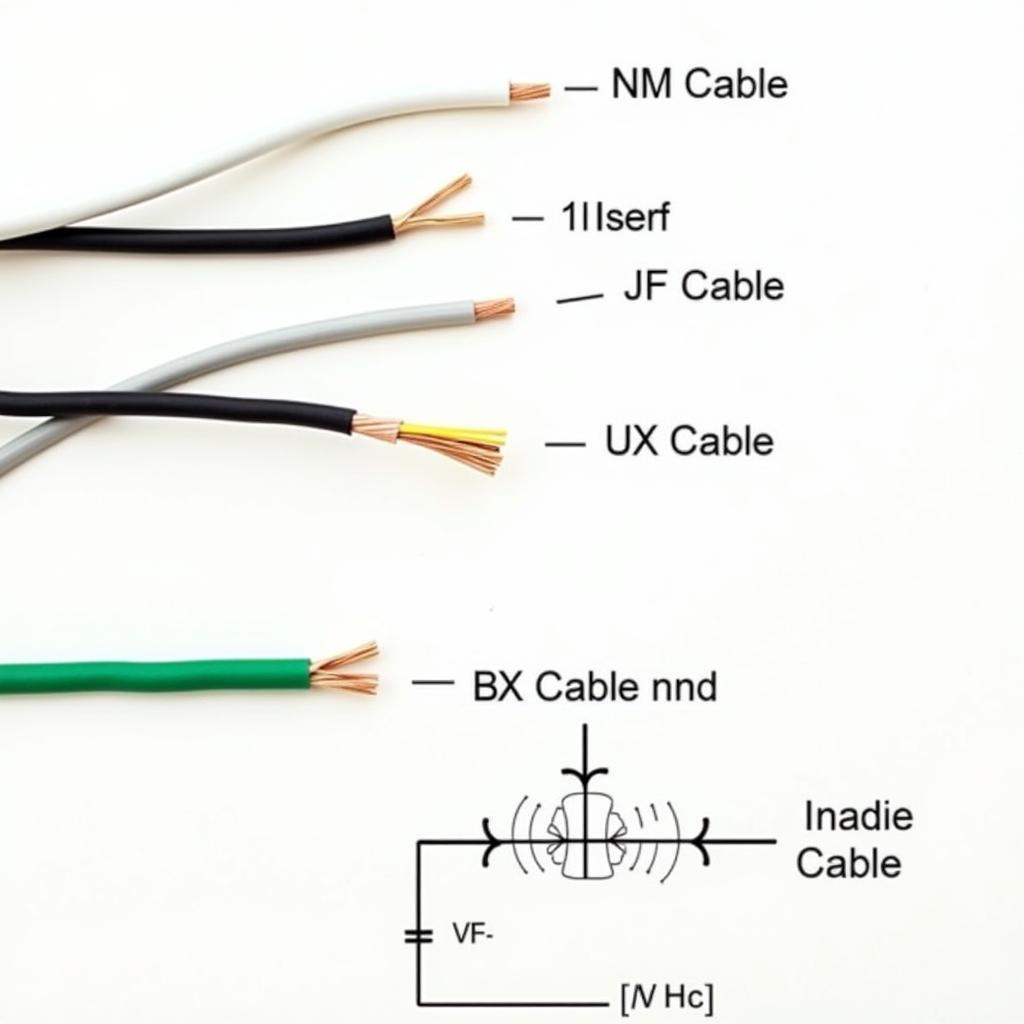In-house wiring is a crucial aspect of any home, ensuring safety and functionality. This guide delves into the intricacies of electrical wiring within your home, covering everything from basic principles to advanced techniques. We’ll explore the importance of proper planning, choosing the right materials, and adhering to safety regulations. After reading this, you’ll have a better understanding of how electricity flows through your home.
Understanding the Basics of In-House Wiring
Before embarking on any wiring project, it’s essential to grasp the fundamental concepts. This includes understanding the different types of wires, their respective functions, and the color-coding system. Familiarizing yourself with these basics will lay a solid foundation for safe and effective wiring. For example, understanding the difference between a neutral wire and a hot wire is crucial for preventing electrical shocks.
Wire Types and Functions
Different wires serve different purposes in your home’s electrical system. Common types include:
- Non-Metallic (NM) Cable (Romex): Used for general-purpose wiring within walls and ceilings.
- Underground Feeder (UF) Cable: Designed for outdoor and underground installations.
- Armored Cable (BX): Provides extra protection in areas prone to damage.
The Importance of Color Codes
Wire colors indicate their function and are crucial for safe wiring. Black wires typically carry the current, white wires are neutral, and green or bare copper wires are for grounding. Following these color codes meticulously is essential for preventing dangerous situations.
 In-House Wiring Basics: Wire Types and Color Codes
In-House Wiring Basics: Wire Types and Color Codes
Planning Your In-House Wiring Project
A well-planned wiring project ensures efficiency and minimizes potential problems. This involves creating a detailed layout, calculating the electrical load, and selecting appropriate wiring materials. Thorough planning is especially important for larger projects like remodeling or building a new home.
Creating a Wiring Diagram
A wiring diagram serves as a roadmap for your project, outlining the location of outlets, switches, and fixtures. This visual representation helps you determine the required wire lengths and the best routing paths. Planning your wiring effectively can also help you save on material costs and avoid unnecessary rework.
Calculating Electrical Load
Accurately calculating the electrical load helps you choose the correct wire gauge and prevent circuit overload. This involves determining the wattage of all appliances and devices that will be connected to the circuit. If you are unsure how to calculate the load, consult a qualified electrician.
Essential Safety Practices
Safety should be your top priority when working with electricity. Always turn off the power at the breaker box before starting any wiring project. Using insulated tools and wearing appropriate safety gear are also crucial. Never work on live wires. Want to learn how to make a beautiful bow? Check out our guide: hướng dẫn làm nơ bằng ruy băng vải.
Grounding and GFCIs
Proper grounding protects against electrical shocks by providing a path for fault currents to flow to the earth. Ground Fault Circuit Interrupters (GFCIs) further enhance safety by quickly shutting off power in the event of a ground fault. These safety measures are especially important in areas like kitchens and bathrooms.
Working with Junction Boxes
Junction boxes are used to connect multiple wires together. Ensure that all connections are secure and properly insulated to prevent short circuits and fires. Always use the appropriate size junction box for the number of wires being connected.
Conclusion
In-house wiring, while complex, can be managed effectively with careful planning and adherence to safety guidelines. By understanding the basics, planning your project thoroughly, and prioritizing safety, you can ensure a functional and safe electrical system in your home. Remember, if you’re uncertain about any aspect of in-house wiring, it’s always best to consult a qualified electrician. Need a quick and easy jellyfish salad recipe? Take a look at this: hướng dẫn cách làm gỏi sứa. Interested in eye makeup? We’ve got you covered: hướng dẫn make up mắt.
FAQs
What type of wire should I use for in-house wiring? NM cable (Romex) is typically used for general-purpose wiring.
How do I calculate the electrical load for a circuit? Add the wattage of all devices connected to the circuit.
Why is grounding important? Grounding protects against electrical shocks.
When you need assistance, contact us at Phone Number: 0372960696, Email: TRAVELCAR[email protected] or visit our office at 260 Cầu Giấy, Hanoi. We have a 24/7 customer support team.

